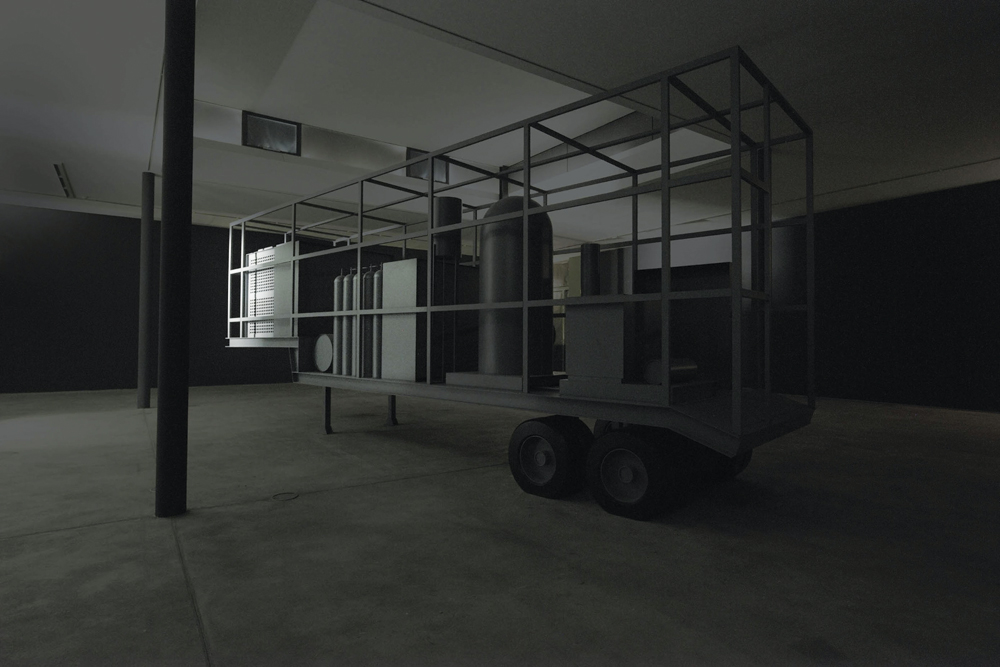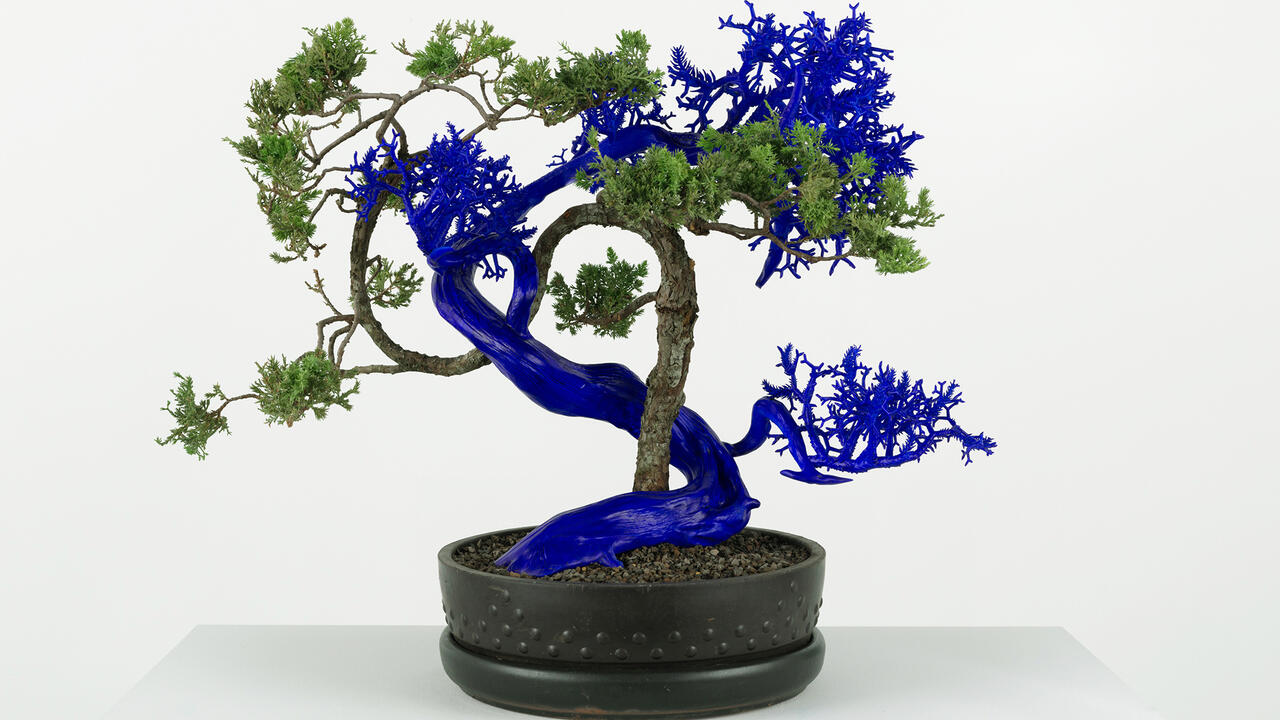Ten Years
Remembering 9/11: how exhibitions in New York and Berlin commemorated the tenth anniversary of the attacks
Remembering 9/11: how exhibitions in New York and Berlin commemorated the tenth anniversary of the attacks

In the decade since the attacks of 11 September 2001 and the start of the wars in Afghanistan and Iraq, what is striking is not necessarily the glut of photographic documentation of these events but how homeless these images have turned out to be. A spate of exhibitions in Berlin and New York used the tenth anniversary of 9/11 – a moment that seemed to leave us poised between remembrance and forgetting – to begin the difficult work of re-looking at the images about and around the attacks, as well those from the wars in their wake. These shows didn’t so much take on the mantle of memorializing, criticizing or even editorializing. Instead, they often kept a critical, aesthetic distance by focusing on the media distribution or artistic interpretation of the images around the events.
‘The Uncanny Familiar: Images of Terror’, which opened on 10 September at C/O Berlin, conflated two national traumas – the hostage massacre at the 1972 Munich Olympics and 9/11 – to examine how imagery of and about terrorism has changed in the interim. Though the show admirably attempted to address the question of how to integrate photojournalism in an artistic context, it amounted to a messy mixture of historical contexts and modes of representation. Somewhere in between the two looped videos of news footage of the planes hitting the twin towers, the explosions of planes in Johan Grimonprez’s Dial H-I-S-T-O-R-Y (1997) and the thousands of gory images plastered across Thomas Hirschhorn’s Incommensurable Banner (2007), a precious few quieter images and voices emerged: the stricken, ash-covered face of a man in an amateur snapshot taken in the subway moments after the attacks (in the show’s partial reconstruction of the 2001 exhibition of anonymous photographs, ‘Here is New York’, originally held in a storefront in SoHo), and Coco Kühn’s stacks of folded issues of the Berliner Zeitung on the four days after 9/11, in which we note not the image of the stricken towers itself, but how the size of the photo featured on the newspaper’s front page shrunk with each successive day.

If ‘The Uncanny Familiar’ highlighted the difficulty of distilling and deciphering the troves of raw and processed imagery created since 9/11, ‘Seeing is Believing’ at Berlin’s KW Institute for Contemporary Art did much of that work for us. Tightly curated and polite by comparison, the show represented artists’ more restrained formal or conceptual approaches. Many of those works used blankness or effacement as aesthetic devices to represent the gaps in our knowledge or understanding of political developments since 11 September, starting with the total black-out of Iñigo Manglano-Ovalle’s Phantom Truck (2007) – a sculpture based on the satellite photo which presumed to show weapons of mass destruction in Iraq – in the darkness of KW’s basement. Adam Broomberg and Oliver Chanarin’s The Day Nobody Died (2008), swathes of colour fields on a roll of photographic paper exposed to the sun during the war in Helmand Province, and Hito Steyerl’s three red screens in Red Alert (2007), deployed abstraction as a literal and metaphorical manifestation of how little we can or do know.
Perhaps because of their emotional proximity to the event, exhibitions around the 9/11 anniversary in New York dealt more directly with the issue of images as ambiguous memorials, questioning whether they can truly stand in for what is now missing. In one bold curatorial move, Peter Eleey’s ‘September 11’ at MoMA PS1 (reviewed in issue 143 of frieze) transformed every work in the exhibition – regardless of its original context or subject – into a possible monument or memorial to that day, yet without seeming heavy-handed. Although Ground Zero (2003), Ellsworth Kelly’s collage of a green square over a New York Times photograph of Ground Zero, was the exhibition’s iconic image – representing what Eleey called the ‘palliative notion of abstraction’ – it was at its most effective alongside another brightly coloured square, Barbara Kruger’s Untitled (Questions) (1991). In bold capital letters on an American flag, Kruger’s voice emerged as one of the few that dared to speak directly and indignantly, asking: ‘Who speaks? Who is silenced? Who salutes longest? Who prays loudest? Who dies first? Who laughs last?’ Not one for the abstract or the palliative, Kruger’s work felt refreshingly urgent and defiant. Alongside more subtle interrogations, we also need artists to pose more brash, abrupt and glaring questions like these.

In a more explicitly commemorative vein, ‘Remembering 9/11’ at New York’s International Center for Photography assembled five cohesive bodies of work representing a spectrum of photographic approaches. Among them, the objects documented in Francesc Torres’s series ‘Memory Remains: 9/11 Artifacts at Hangar 17’ seemed the most fitting analogy for the images surrounding 11 September. In 2009, Torres catalogued the items pulled from the rubble of the World Trade Center, then stored at a hanger at JFK Airport while awaiting their placement in an eventual 9/11 memorial museum – everything from whole steel girders and smashed taxi cabs, to scraps of paper and clothing, each marked with evidence tags. Enlarged to almost monumental scale on five video screens, Torres’s images capture how lost these items are. They are waiting to become ‘historical artifacts’ but are no longer ‘evidence’ in much the same way that many of the images made on and since 11 September are suspended in that still-uneasy space.
Even if the tenth anniversary proved a somewhat arbitrary point at which to do so, these exhibitions, at the very least, exposed some of the questions that need to be worked through. Should we rely on images to give us truthful accounts, or use them to question the idea of an absolute truth? Is it more effective to expose and document the events of and after 9/11 exhaustively or represent them with silence or blankness, a mode of memorialization that keeps a safe aesthetic distance from politics? Should we turn to the evidence or to art works about that evidence? In the August 2011 issue of Harper’s Magazine, writer David Reiff made the case for ‘forgetting’ 9/11, arguing that remembering it will always in some way be inherently political. In the many curatorial attempts to memorialize the events of that day and to look at the images again, I can’t help but ask: how often do we willingly re-live our own personal traumas through images? It feels almost cruel that so many images of this tragedy exist and that we are physically and morally compelled to look at, organize and make sense of them. At the same time, and equally cruelly, we seem far less willing to examine the continuously mounting surfeit of images of the wars in Afghanistan, Iraq and other ongoing conflicts.























